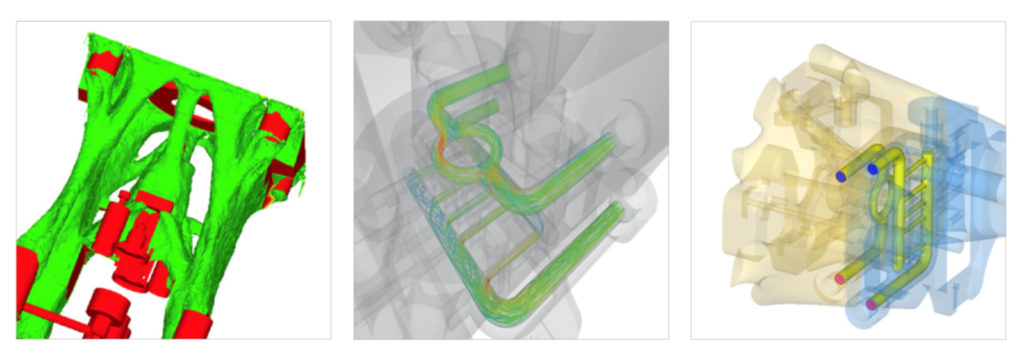French metal 3D printing group AddUp has entered into a $2.7 million agreement with the U.S. Department of Energy’s Oak Ridge National Laboratory (ORNL) to push laser powder bed fusion (PBF) for the use of 3D printing metal molds. While additive manufacturing (AM) is regularly used for the production of tooling, the metal mold supply chain has yet to be truly disrupted by the technology. Given its history of making millions of parts within (its part-owner) Michelin’s own tire mold fabrication process, AddUp may be an important actor in this disruption.
The AddUp Group is the result of years of research on the behalf of Michelin to create better, more cost-effective tires. Since 2000, the company began exploring the possibilities of AM for making tire molds, ultimately leading the development of in-house metal 3D printers. Michelin has roughly two dozen such systems installed worldwide 3D printing over a million metal parts annually. The tire-maker then turned to Fives, an industrial engineering firm with over 160 years of experience, to commercialize the technology via a new 50/50 partnership: the AddUp Group.
With ORNL, AddUp hopes to improve the deposition rate of powder bed systems, while maintaining tight management over the metallurgy of the technology and the qualification of steel tooling. For its part, ORNL has long been in the field of advancing 3D printing technology, including the development of Cincinnati Inc’s Big Area Additive Manufacturing system. In the realm of laser PBF, the research lab is at work improving quality control and expanding material sets. ORNL will be able to contribute its expertise in material properties, process parameters with in-situ analysis, and machine learning to deliver validated process parameters and microstructural characterization of AM tool steels.
The research will aim to develop methods to overcome such geometric constraints as overhang angles, thin walls and process repeatability that have prevented metal 3D printing from widespread adoption in the larger world of mass manufacturing and tooling production. The partners will explore the 3D printing of tooling with complex conformal cooling channels for plastic injection molding that cannot be made using traditional methods.

Using HyperWorks, PROTIQ performed topology optimization on an injection mold to remove material where not needed. Conformal cooling was used to shorten cycle times. Images courtesy of Altair.
3D printing injection molding tools could bring about significant benefits. AM marketplace PROTIQ, for instance, uses simulation tools from Altair to perform topology optimization specifically to metal molds, taking into account the loads associated with closing the mold, injecting the material, and closing the mold, as well as the way that heat dissipates throughout the mold.
In one study, PROTIQ removed 75 percent of the weight from a mold, meaning that the tool, which would have normally been too heavy to move by hand, could be changed in the injection molding machine manually. The incorporation of conformal cooling channels into the tool cut cooling time from about 9 or 10 seconds to about 3.2. Altogether, the company suggests that cycle times for injection molding can be reduced by one-third on average.
While PROTIQ, a subsidiary of German industrial manufacturer Phoenix Contact, has developed tools for optimizing and printing injection molding tools, AddUp has its own partnerships to advance its stake in the game. In addition to the new ORNL agreement, the company teamed with French simulation software developers ESI Group to create the Distortion Simulation AddOn module for its 3D printers. AddUp is also working with the IPC trade group to develop a platform for 3D printing injection molds with conformal cooling.
Not only is AddUp shaping up to be a formidable player in the yet-to-be-disrupted space of metal molds, but, with its acquisitions of BeAM and Poly-Shape, it is becoming a significant pillar of the 3D printing industry. Another French 3D printing heavyweight, Prodways, hasn’t been making the news quite as much recently, which makes one wonder if there’s a shake-up taking place in France at the moment.
Join the discussion of this and other 3D printing topics at 3DPrintBoard.com.
Subscribe to Our Email Newsletter
Stay up-to-date on all the latest news from the 3D printing industry and receive information and offers from third party vendors.
Print Services
Upload your 3D Models and get them printed quickly and efficiently.
You May Also Like
Could 3D Printing for Biocomputing Make Wetware Aware?
As an AI arms race consumes ever more electricity, and every ChatGPT search query costs $0.36, the search for new ways of computing has intensified. One answer could be in better...
Bambu Lab Launches Software to Manage 3D Printer Fleets—No Cloud Needed
Bambu Lab has introduced a new software tool, Bambu Farm Manager, designed to help users manage large fleets of 3D printers over a local network, without relying on the cloud....
Consolidation in AM: How 2025 Is Shaping the Industry’s New Normal
The first half of 2025 has been marked by a clear shift in the additive manufacturing (AM) industry. Companies are no longer just focused on developing new tech by themselves....
3D Printing News Briefs, July 2, 2025: Copper Alloys, Defense Manufacturing, & More
We’re starting off with metals in today’s 3D Printing News Briefs, as Farsoon has unveiled a large-scale AM solution for copper alloys, and Meltio used its wire-laser metal solution to...
































